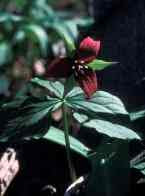Circle round, and I'll tell you a tale. If you are open to the existence of wee folk that we humans cannot usually see, then this is a tale of how not to live with them. If you don't believe in such things, then this is a tale of blundering stubborn oaf and a power tool.
Early last winter, between Samhain and Yule, we were looking forward to cutting our Yule tree (Christmas for ye folke from the Dominant Culture). When we bought this place, we were told the big blue spruce growing very close to the septic tank should come out, since the roots would foul up the workings of the septic system. Being cheap (OK, poor), I suggested that we use the top of the spruce for our Yule decoration. All assented, though I would have hoped for more enthusiasm.
The first Saturday in December has been the Appointed Day for several years, but on that day, we all woke up surly, grumpy and ready to bite off each other's heads. After a morning full of arguments, we decided that perhaps today wasn't the day to cut a tree. End of story? Not quite. Being the stubborn male with the chain saw, I was still game to cut 'er down, especially when the grumpies had faded by mid-afternoon.
I dressed in my warm coveralls and ventured forth in the ass-deep (almost) snow. It really was over my knees, though. The chain saw was, of course, sluggish to start, but aren't they always? Finally, it roared (coughed) to life. I trimmed a few branches, then made my box cut on the side of the trunk away from the house. As I made the back cut, with only inches to go, the saw got pinched by the weight of the tree. As I studied it again, with the added eight of the snow, the tree was leaning back toward the house.
After some futile tugging on a couple branches, I gave up. Time for a mechanical assist. I tied a rope around the trunk as high as I could reach, stretched the other end toward the driveway, then backed the van up toward the rope. Not quite long enough. I fired up the trusty snowblower and cleared a bit more driveway. Just as I finished, the damn thing ran out of gas. For a normal snowblower, this would not be a big deal. But mine has an electric start. Only. The pull rope was missing. I had to drag the damn thing backward all the way to the garage.
By now the wind was howling as if to say, "How dense are you? We told you not to do this!" I had my wife back up the van, and I tied on the rope. With a bit of pull the tree finally fell! Now I had a tree top to cut off and drag through ass-deep snow. I made the cut, looked at our Yule tree lying on its side, and cut off another foot. Then came the dragging, rolling, cursing, and dragging.
The sun was sliding over the western hill as I got the thing to the front porch. After the usual 2 or 3 attempts and fiddling, I got the stand on, and it looked OK. Now the base of this tree was about eight feet wide, but we have a double front door. So with cold bare hands, I took out the center post (removeable) and opened the other door. Soon the snow-covered tree was inside! There it lay while I ate supper, and the snow melted into giant puddles on the entryway floor.
Refreshed and energized, I dragged and lugged the tree monster to the family room, with its cathedral ceiling. With a bit more tweaking and snapping at my wife, I got the thing to stand up. Minutes later, for the first time in my life, the tree fell over. More adjusting, and I tried again. This time it stood up! But the base was way too wide; we couldn't move through the room. With a pruning saw, since we were inside, I took care of the giant lower boughs. Looks great, I thought. Then my wife noticed the fresh cuts were dripping sap onto the carpet. I guess that happens with really fresh trees. Soon, the cuts were bedecked with tufts of cotton. Looked just like snow!
The next moring, we decided to tackle the lights. Yes, I tested all the strings before putting them on the tree, but by the time I was half done, two strings were dead. Not just one like in a normal year! Thank goodness for lights on sale after Thanksgiving.
As long as that tree was in the house, we felt uneasy. There was a general agitation, as if something or someone was not happy. There were strange noises, flashes of movement, and breathes of air on the back of one's neck. As I write this, the lower trunk of the tree still rests where it fell.
Now every good tale has a moral, right? This adventure taught me to heed those instincts! If you feel like you shouldn't do something, don't do it! If something is harder than it needs to be, there may be forces at work against you! Call them faeries, tree spirits, or what you will, they can make life difficult if they want to. Next year, we're going to BUY a tree. A nice, SMALL tree. Let me be the first to wish you a happy Yule!
Ultimately, a greater reliance on local power would eliminate one of the
most destructive side-effects of the grid: the implicit notion that energy
is li...





